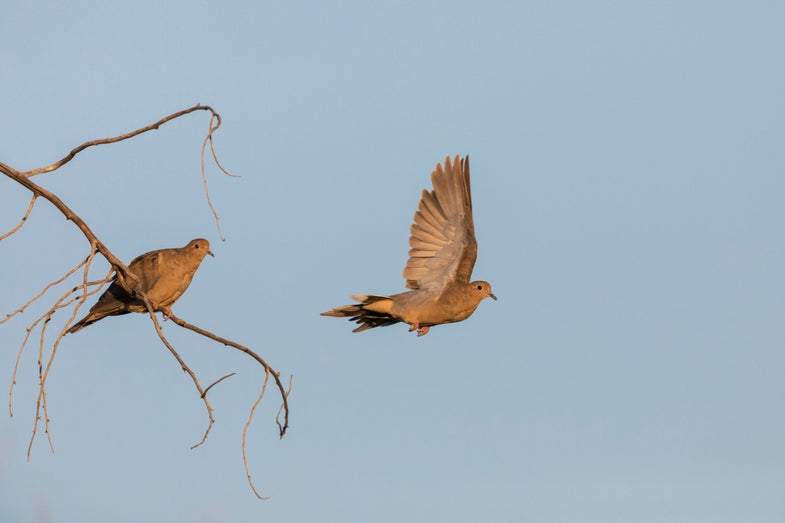Four Wingshooting Tips to Hit Move Doves
Want to connect on more doves come opening day? Follow these four "cheats"

Opening day of dove season is nigh. Soon, your shooting skills will be on display for all to see. Don’t despair. Cheat. Not “cheat” as in, say, taking performance-enhancing drugs. Unlike steroids, the cheats offered here are legal. They will help your average on doves and won’t make your head swell up like a watermelon. And they will give you an unfair advantage on September 1.
1. Shoot a Gas Autoloader
Let others show off their fancy doubles. In the dove field, you should carry a gun that cheats Newton’s Third Law of Motion. Gas autoloaders spread out that “equal and opposite reaction,” turning recoil from a sharp blow into a shove. A 20-gauge gas gun is practically painless to shoot, and we’re all better wingshots when we’re not getting kicked.
Also, autos don’t have to be broken open for reloading when there are doves overhead. Plus, they hold three shells. Resist the temptation to empty the gun at a dove. Keep that last round in reserve to shoot at the bird that floats in right after you miss your original target twice.
If your dove gun isn’t a gas auto, trade it in for one, new or used. Gunsamerica.com recently listed a used 20-gauge Remington 1100 with a 26-inch Improved Cylinder barrel in great condition for $435.
2. Shoot Deadlier Ammo
Skip the Wal-Mart promotional loads and spend extra money on good target ammunition or even high-quality hunting loads, such as Winchester AA target and Federal’s Wing-Shok Quail Forever loads. If you shoot four boxes of shells–that’s 100 rounds–a year at doves, we’re talking about $10 or so extra. You can afford the difference.
And don’t forget to cheat on payload. If you buy 1-ounce premium loads for your 20-gauge, you’ll get 60 more pattern-thickening No. 8 pellets than there are in the 7/8-ounce loads everyone else is using. The gas auto will take care of the additional recoil.
3. Hunt the Easiest Spot
Visit the site of the shoot and watch doves fly into the field. Often, entering doves will key on certain landmarks, like a tall, single dead elm, or a break in the tree line. Locate those natural flight paths and claim one as your hunting spot. Pick a place to sit where the doves will offer your favorite shot. You can set yourself up to shoot right to lefts, or left to rights, or best of all, get right under the birds so you can shoot incomers.
4. Warm Up on Pigeons
Shoot enough practice clays and you’ll find yourself shooting in front of the live birds until you get your swing in sync with them. But shoot no clays at all and you’ll be hopelessly rusty.
In a perfect world, your final tune-up for mourning dove season would entail hopping in your private jet and flying to Argentina to shoot at eared doves, which fly and taste just like our mourning doves. Realistically, you should stay home and shoot real pigeons, not clay ones. You and a friend can take turns running them out of a barn and shooting. Or even better, find a cut grainfield where pigeons are feeding. Pass-shoot them and you’ll relearn how to match the speed of your swing to the speed of a real bird, and to focus on the eye or the beak.
There’s another benefit. Pigeons, properly known as rock doves, are delicious grilled, allowing you to sneak in some practice for the post-hunt dove barbecue on opening day.